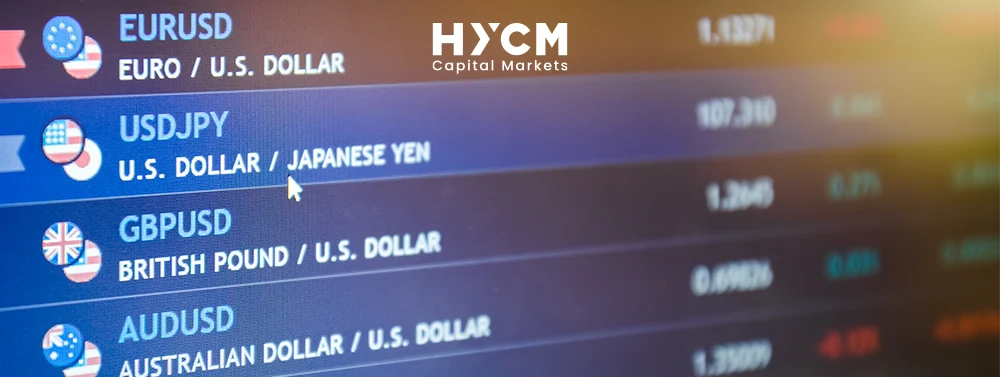Components of a Currency Pair
To truly understand how forex trading works, you need to know the two core components of a currency pair: the base currency and the quote currency. These two elements define how prices are displayed and how profits and losses are calculated in trading.
The base currency is the first currency in the pair. It serves as the reference currency—the one you are buying or selling. The quote currency (also known as the counter currency) is the second in the pair and tells you how much of that currency you need to buy one unit of the base currency.
Let’s take the pair EUR/USD as an example. Here:
-
EUR is the base currency.
-
USD is the quote currency.
-
If the price is 1.1000, it means 1 euro is worth 1.10 U.S. dollars.
So, if you buy EUR/USD, you’re buying euros and selling dollars. If you sell EUR/USD, you’re selling euros and buying dollars. Every price move in a currency pair reflects how the base currency is gaining or losing value compared to the quote currency.
Another crucial aspect of currency pairs is the bid and ask price.
-
The bid price is the highest price a buyer is willing to pay for the pair (what you get if you sell).
-
The ask price is the lowest price a seller is willing to accept (what you pay if you buy).
-
The spread is the difference between these two prices and represents a transaction cost.
For example, if EUR/USD has a bid price of 1.0998 and an ask price of 1.1000, the spread is 2 pips. Lower spreads usually occur in highly liquid pairs like the majors.
Understanding how the base and quote currencies work, and how bid/ask pricing functions, helps traders better analyze market opportunities, manage trade entries, and calculate potential profits or losses.
What Are The Different Types of Currency Pairs?
Currency pairs in forex trading are generally categorized into three main types: major pairs, minor pairs, and exotic pairs. Each group behaves differently in terms of volatility, liquidity, spread, and overall trading dynamics. Understanding these categories is key to choosing pairs that align with your risk profile and trading style.
Major Pairs
Major currency pairs are the most heavily traded pairs in the world and always include the U.S. dollar (USD) on one side. These pairs typically offer the lowest spreads, high liquidity, and frequent price movements, making them popular among both beginners and professional traders.
Examples of major pairs include:
-
EUR/USD (euro / U.S. dollar)
-
GBP/USD (British pound / U.S. dollar)
-
USD/JPY (U.S. dollar / Japanese yen)
-
USD/CHF (U.S. dollar / Swiss franc)
-
AUD/USD (Australian dollar / U.S. dollar)
-
USD/CAD (U.S. dollar / Canadian dollar)
Due to their liquidity and tight spreads, major pairs are ideal for day traders and scalpers looking for short-term moves with reduced costs.
Minor Pairs
Minor pairs, also known as cross-currency pairs, do not include the U.S. dollar but still involve major currencies. These pairs are less liquid than majors, often with slightly wider spreads, but can still provide excellent trading opportunities.
Examples of minor pairs include:
-
EUR/GBP (euro / British pound)
-
EUR/JPY (euro / Japanese yen)
-
GBP/JPY (British pound / Japanese yen)
-
AUD/NZD (Australian dollar / New Zealand dollar)
Minors can show more erratic movements at times due to lower volume and reduced media coverage, but they often move in response to regional economic data, offering diverse trading setups.
Exotic Pairs
Exotic pairs consist of one major currency and one from a smaller or emerging economy, such as Turkey, Mexico, or South Africa. These pairs are known for their higher volatility, lower liquidity, and significantly wider spreads. As a result, they carry higher risk and are often suited for more experienced traders.
Examples include:
-
USD/TRY (U.S. dollar / Turkish lira)
-
EUR/SEK (euro / Swedish krona)
-
USD/ZAR (U.S. dollar / South African rand)
-
GBP/MXN (British pound / Mexican peso)
Exotic pairs can offer large price swings and potential profits, but also come with increased risk due to sudden volatility, political instability, and economic uncertainty in emerging markets.
In summary, choosing between major, minor, and exotic pairs depends on your trading goals and tolerance for risk. In the next section, we’ll explore how and why currency pairs move, helping you understand the forces that drive forex market behavior.
How Currency Pairs Move?
Currency pairs move based on the relative strength or weakness between the two currencies involved. Unlike other financial instruments that have intrinsic value, currencies are priced against each other—meaning when one currency strengthens, the other must weaken in the pair. These movements are driven by a combination of economic indicators, geopolitical events, central bank policies, and market sentiment.
One of the biggest drivers of currency movements is interest rate differentials. Currencies with higher interest rates tend to attract more investment, which can lead to appreciation. For example, if the U.S. Federal Reserve raises rates while the European Central Bank holds steady, the USD may strengthen against the EUR, causing EUR/USD to move downward.
Another major influence is economic data, such as GDP growth, employment reports, inflation figures, and retail sales. Strong economic data typically signals a healthy economy, increasing demand for that currency. Conversely, weak data can lead to a decline in value as confidence drops.
Geopolitical events—such as elections, wars, or trade disputes—can also cause rapid and sometimes unpredictable movements in currency pairs. Political instability can drive investors away from a currency, while stability and strong leadership often attract capital inflows.
Additionally, market sentiment—the overall mood of traders and investors—can have a short-term effect on currency movements. This is especially true in risk-sensitive environments where traders shift quickly between safe-haven currencies like the U.S. dollar (USD) or Swiss franc (CHF) and riskier currencies like the Australian dollar (AUD) or emerging market currencies.
It’s also important to understand the concepts of bullish and bearish movements:
-
A bullish move in a currency pair means the base currency is strengthening against the quote currency.
-
A bearish move means the base currency is weakening against the quote currency.
For example, if GBP/USD rises from 1.2500 to 1.2700, the British pound is gaining value relative to the U.S. dollar (bullish on GBP). If it drops to 1.2300, the pound is weakening (bearish on GBP).
Traders use a combination of technical analysis, fundamental analysis, and economic calendars to anticipate and respond to these movements.
Up next, we’ll explore how to choose the right currency pairs to trade, especially for beginners looking to find balance between opportunity and risk.
Choosing the Right Currency Pairs to Trade
With dozens of currency pairs available, selecting which ones to trade can feel overwhelming—especially for beginners. However, choosing the right pairs is an important step toward building a focused and effective trading strategy. Not all pairs behave the same way, and understanding the key factors can help traders make more informed decisions based on market behavior, trading style, and risk tolerance.
One of the first factors to consider is volatility. Some pairs, like GBP/JPY or EUR/JPY, are known for large daily price movements, making them attractive to traders seeking short-term opportunities. Others, like EUR/USD, are generally more stable and liquid, offering smoother price action that’s well-suited for beginners and longer-term strategies.
Liquidity is another critical consideration. Highly liquid pairs like the majors (e.g., EUR/USD, USD/JPY, GBP/USD) tend to have tighter spreads, lower slippage, and faster execution—especially during major trading sessions like London and New York. Less liquid pairs, such as exotics, may carry wider spreads and increased trading costs.
Trading hours also matter. Currency pairs are most active when their corresponding financial centers are open. For example:
-
EUR/USD is most active during the London and New York sessions.
-
AUD/JPY sees higher activity during the Asian session.
Traders should choose pairs that align with their available trading times to capitalize on high liquidity and avoid unnecessary spread widening during off-hours.
Correlation is another strategic factor. Some currency pairs tend to move in the same direction (positive correlation), while others move oppositely (negative correlation). For instance, EUR/USD and GBP/USD often move together, while USD/CHF and EUR/USD often move inversely. Understanding these relationships helps traders diversify exposure and avoid redundant risk.
For beginners, it’s often wise to start with one or two major pairs, such as EUR/USD or USD/JPY, to become familiar with how they move and respond to news events. As experience grows, traders can expand to minors or exotics based on their strategies and risk appetite.
Choosing the right currency pairs is about more than preference—it’s about aligning your choices with a clear, disciplined trading plan.
Conclusion: The Role of Currency Pairs in Forex Trading
Currency pairs are at the heart of forex trading—they're not just a technical detail, but the very structure through which all trading decisions are made. Whether you're analyzing a chart, placing an order, or managing your risk, you're always dealing with a relationship between two currencies. Understanding this dynamic is essential for interpreting price movement, choosing trades, and executing strategies effectively.
From learning how currency pairs are structured to identifying their types, behavior, and movement patterns, every piece of knowledge adds to a trader's edge. Beginners especially benefit from focusing on major pairs to build experience with predictable patterns, lower costs, and high liquidity.
In a market as fast-paced and global as forex, mastery over currency pairs is non-negotiable. They are the foundation upon which traders develop their skills, grow their confidence, and ultimately succeed. Whether you plan to trade short-term or invest long-term, a deep understanding of currency pairs will serve as one of your most valuable trading tools.







